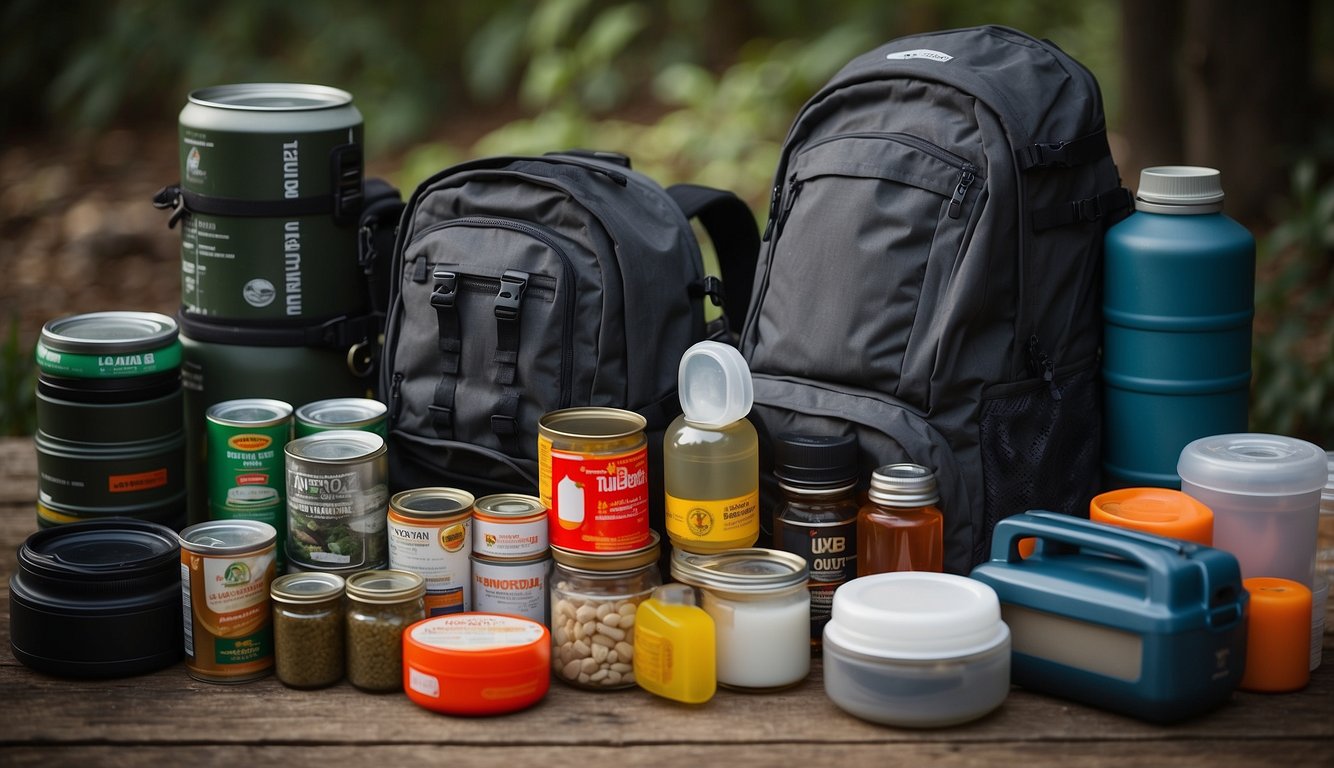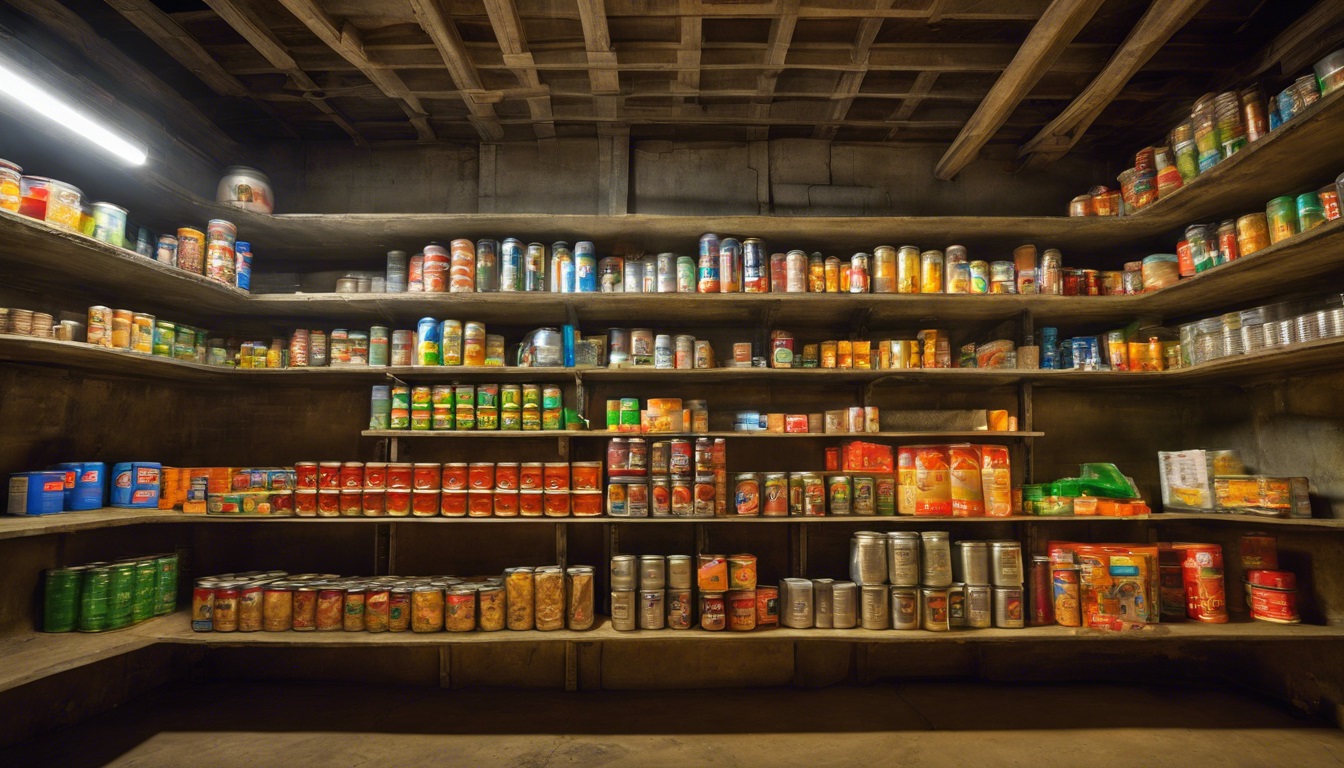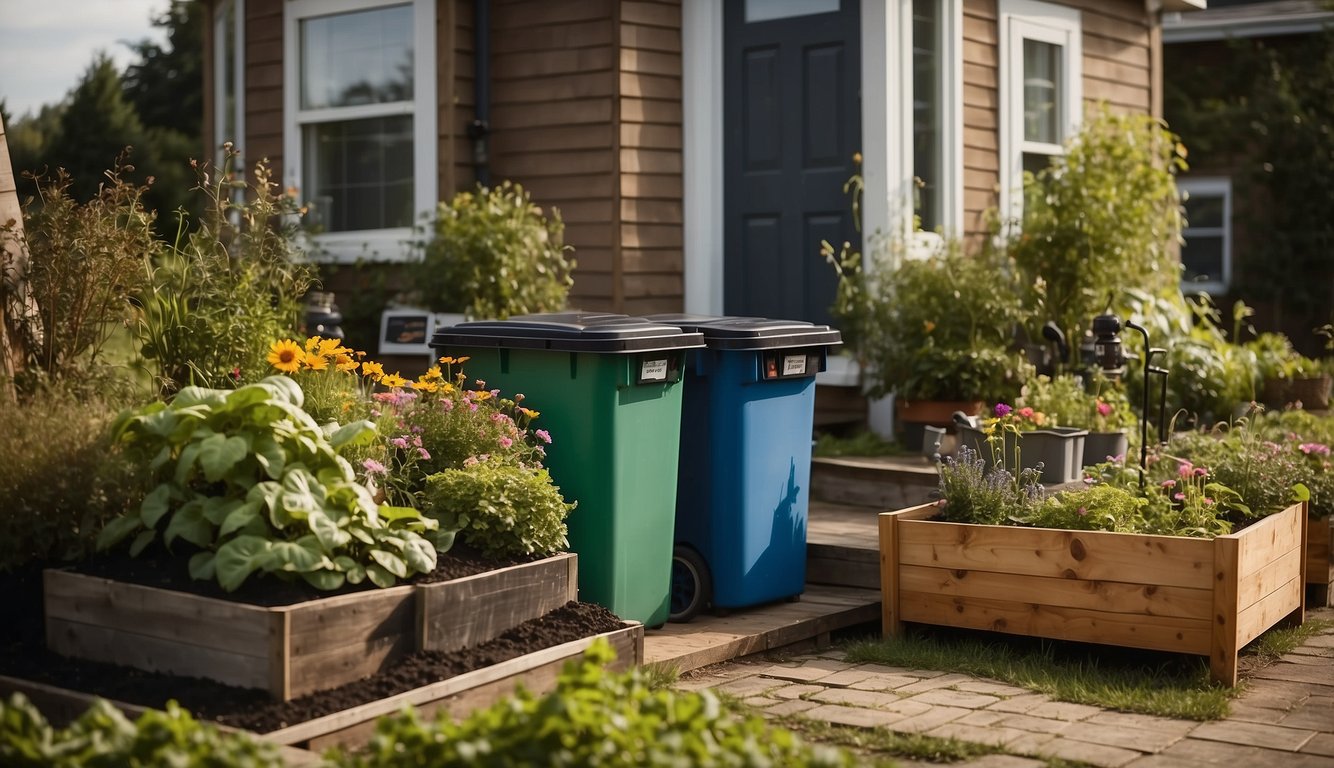
In emergency preparedness, the debate between bugging out versus bugging in is crucial. Bugging out involves leaving your current location to find safety elsewhere, while bugging in means staying put and fortifying your current location to wait out a crisis. Each strategy has its own set of considerations, risks, and advantages that are dependent on various factors, including the nature of the emergency, the level of preparedness, and the resources at hand. Understanding the circumstances under which each is more appropriate can significantly increase your chances of successfully navigating emergencies.
The decision to either bug out or bug in requires thorough planning and a comprehensive understanding of what each entails. Bugging out might mean having a well-stocked and reachable bug out bag, a clear escape route, and a planned destination. On the other hand, bugging in entails ensuring your home can provide long-term shelter, security, and supplies. It also includes having the necessary skills to sustain oneself without external resources. You will need to evaluate your situation carefully, considering all potential risks and benefits, to make the best choice for your safety and survival.
Key Takeaways
- Bugging out means leaving, and bugging in means staying, each with unique considerations.
- A proper assessment of your situation is essential in making a safe choice between the two.
- Planning and preparation are key to navigating emergencies successfully.
Understanding Bug Out and Bug In
In emergency preparedness, deciding whether to bug out or bug in is critical. Understand the implications of each strategy so you can make an informed decision when faced with a crisis.
Definition and Overview
Bug Out refers to the act of evacuating your home in response to an emergency. This decision is typically made when staying put poses a greater risk to your survival than leaving. When you bug out, you aim to move to a safer location until the danger has passed.
On the other hand, Bug In means to stay in your current location and fortify it. This approach is often safer and more manageable during short-term disturbances or when the dangers of traveling outweigh the benefits.
- Survival hinges on choosing the right approach based on your situation.
Assessing the Situation
Before making a decision, gather as much information as possible about the:
- Nature of the emergency
- Duration of the expected threat
- Safety of potential destinations
- Status of evacuation routes and methods
By evaluating these factors, you can decide which strategy—bugging in or bugging out—better ensures your survival.
Judgment and Decision Making
Decision Making involves a rational analysis of the potential risks and benefits.
When considering bugging out:
- Assess the viability of reaching your intended destination.
- Calculate the potential risks associated with travel during the emergency.
If you opt to bug in:
- Evaluate your home’s preparedness to shelter you safely.
- Ensure you have sufficient supplies and a plan for long-term self-sufficiency if needed.
Your judgment must be based on the specifics of the situation at hand, and the decision should be made promptly to optimize your chances of survival.
Preparing for Emergencies

In preparing for emergencies, you need a comprehensive plan, adequate supplies, and a clear understanding of whether to shelter in place or evacuate. Your readiness can significantly affect your survival and comfort during unforeseen events.
Building a Survival Plan
Begin by assessing potential threats in your region, whether they’re natural disasters, power outages, or civil unrest. Create a document outlining emergency contacts, local shelters, and a communication protocol for your family. Ensure everyone knows their role in the plan.
Essential Supplies and Stockpiling
Stockpiling involves gathering enough food, water, and medical supplies to last several days or weeks. Use a table for organization:
| Item | Quantity | Notes |
|---|---|---|
| Water | 1 gallon per person per day | Store for at least three days |
| Food | Enough non-perishable items | Prioritize nutrition and shelf life |
| Medical Supplies | First aid kit, prescriptions | Customize for personal health needs |
Home Preparedness for Bugging In
When sheltering in place, reinforce your home’s safety and utilities. Ensure you have:
- Alternative power sources: Generators, solar chargers, or batteries
- Security measures: Locks, bars, and a plan for various scenarios
- Communication tools: Radios and other devices for updates on the emergency
Assembling a Bug Out Bag
Your bug out bag should have essentials for 72 hours. Start with these items:
- Clothing for all weather conditions
- Basic tools and multitools
- Essential documents in waterproof bags
- Light sources: Flashlights and glow sticks
Evacuation Plan
Map out multiple evacuation routes and practice them. Determine meeting points and plan for various modes of transportation. Keep your vehicle fueled and ready, and know where the nearest fuel stockpiles are in relation to your routes.
By following these steps and continuously updating your plans and supplies, you ensure that you’re better equipped to face any emergency scenario.
The Bug Out

When you choose to bug out, you’re deciding to leave your home to reach a predetermined safe location. This process requires careful planning, including selecting a suitable location, understanding potential risks, equipping yourself with the right gear, and being prepared to survive in the wilderness.
Choosing a Bug Out Location
Your bug out location should be a considerable distance from your current residence, but it must also be reachable in an emergency situation. Key factors include:
- Safety: Choose a location with a low risk of natural disasters and away from potential conflict areas.
- Sustainability: Look for a place with access to water, food sources, and materials for shelter.
- Secrecy: It should be inconspicuous to avoid attention from others who may be desperate in a crisis.
Dangers of Bugging Out
- Travel Risks: The journey may involve navigating hazardous terrain or weather conditions.
- Confrontation: Increased risk of encounters with others competing for scarce resources.
Benefits of Bugging Out
Bugging out can offer:
- Safety: Distance from urban chaos and threats.
- Self-sufficiency: Opportunity to utilize your survival skills in a potentially less contested environment.
Transport and Bug Out Vehicles
Select a bug out vehicle that is:
- Reliable: It must operate well in various terrains and conditions.
- Concealed: Opt for nondescript colors and features to blend into your surroundings.
- Capable: Consider four-wheel drive and cargo space for your gear.
Survival Gear for the Wilderness
Pack the essentials:
- Shelter: Tent/tarp, sleeping bag, and a thermal blanket.
- Water: Filtration system and portable containers.
- Fire: Lighters, ferro rods, and tender.
Use bullet points to ensure you pack efficiently:
- Clothing: Weather-appropriate and durable.
- Food: High-energy, non-perishable items.
- Tools: Multipurpose knife, hatchet, and navigation tools.
Wilderness Survival Skills
Your skills are as critical as your gear. Essential skills include:
- Foraging: Identifying edible plants and insects.
- Hunting and Fishing: Knowing how to trap small game and catch fish.
- First Aid: Treating injuries and recognizing symptoms of illness.
By understanding these components, you’re better equipped to execute a successful bug out if the situation arises. Remember, your safety and survival hinge on thorough preparation and the ability to make informed decisions under pressure.
The Bug In

When considering your emergency preparedness strategy, bugging in—choosing to remain in your own home during a crisis—often leverages the familiarity and resources you already have. It’s about making the best use of your existing shelter, where you likely have easy access to supplies, water, and food.
Benefits of Bugging In
Familiarity: Your home environment offers a sense of comfort and familiarity, allowing you to better navigate and utilize resources during a crisis.
Resources: Being surrounded by your personal supplies, from food and water to medical care essentials, is a key advantage.
Resources Description Water Access to stored or tap water eliminates immediate scarcity concerns. Food Stockpiles of non-perishable food items ensure nutrition. Medical Care Having a first-aid kit and medications at hand means quicker response to health issues. Hygiene Established sanitation systems support hygiene and prevent illness.
Home Security and Safety
Your home is your fortress and controlling access is critical:
- Locks and barriers: Solidify entry points with sturdy locks and, if necessary, boarded-up windows.
- Surveillance: Implement cameras or other security measures to monitor your surroundings.
Sustainable Living at Home
- Self-Sufficiency: Utilize your space for gardening or rainwater harvesting to maintain a degree of independence.
- Energy: Consider alternative power sources like generators or solar panels to keep your home functional.
Dealing with a Prolonged Crisis
- Long-Term Planning: Store enough resources for an extended stay, ensuring water and food don’t run low.
- Mental Health: Maintain a routine to support mental well-being during extended periods of confinement.
Risk Assessment in Different Scenarios

When faced with a potential threat, your safety depends on a thorough risk assessment. This section helps you weigh various factors including your location, the type of disaster, and the intensity of societal breakdowns to make informed decisions about whether to bug in or bug out.
Urban vs. Rural Considerations
Urban Environs: In densely populated areas, resources may become scarce quickly, and infrastructure failures can have immediate impacts on your safety. Determining the likelihood of supply chain disruptions, service outages, and increased competition for resources is critical.
- Supply Chains: Disruption likely
- Services: High risk of outage
Rural Areas: Although more isolated which can provide safety from mass unrest, the distance from emergency services may extend response times.
- Isolation: Can be an advantage or disadvantage
- Emergency Services: Slower response
Natural Disasters
Wildfires, Hurricanes, Floods: These events are often forecasted, giving you time to evaluate the need to evacuate based on proximity and potential impact.
- Wildfire: Evacuation often necessary
- Hurricanes and Floods: Shelter options dependent on structure integrity and elevation
Civil Unrest and Looting
Riots and Looters become more prevalent in crisis situations, especially where law enforcement is overwhelmed or non-existent. In cities, the risk is magnified.
- Urban Riots: High probability
- Suburban: Risk exists but may be less pronounced
War and Nuclear Threats
The threat of war or nuclear attacks requires consideration of your proximity to potential targets.
- Urban Targets: Higher risk due to strategic value
- Rural Safety: Relative distance from targets may offer buffer
Health Crises and Pandemics
During pandemics, your risk assessment should consider exposure likelihood and access to medical care.
- Urban Exposure: Higher due to population density
- Rural Access: Medical facilities may be limited
Each scenario requires a unique response, and your safety plan should be adaptable to the specifics of the threat and your situation.
Mitigation and Adaptation Strategies

In preparing for uncertainty, whether you choose to bug out or bug in, it’s vital to establish robust mitigation and adaptation strategies. These ensure your preparedness for long-term sustainability, enhancing your skills, and building a supportive network.
Long-Term Prepping
When it comes to long-term prepping, your focus should be on sustainability and self-sufficiency.
- Food and Water: Store non-perishable food items and water purification methods like filters or tablets. Consider growing your own food as an alternative source.
- Energy: Invest in alternative energy sources, such as solar panels or wind turbines, to maintain power independently from the grid.
- Shelter: Ensure your home or bug-out location is fortified against extreme weather or other threats.
Skills Development
Developing a solid skillset is crucial for surviving any challenging scenario.
- First Aid: Learn basic first aid and CPR.
- Self-Defense: Acquire self-defense skills to protect yourself and your loved ones.
- DIY Repairs: Be able to perform basic repairs on your home and equipment.
Mastering these skills enhances your capability to adapt and thrive in various situations.
Community and Network Building
Strength lies in numbers, and establishing a community network can be a lifesaver.
- Local Groups: Connect with local prepping groups to exchange skills and resources.
- Communication Channels: Establish reliable communication channels, like radios, to stay in contact during emergencies.
Collaboration with a network increases access to resources, knowledge, and mutual assistance.
Tips and Best Practices

When facing an emergency situation, your decision to bug out or bug in is critical. This section provides you with focused guidance to ensure you’re prepared to take action and maintain your well-being.
Timely Action and Quick Response
Prepare an Emergency Kit: Always have a ‘bug out bag’ ready with essential items such as water, food, first-aid supplies, and personal documents. If you decide to bug in, have a supply kit tailored to sustaining you at home.
- Make Lists: Keep a checklist for both bugging in and bugging out scenarios.
- Practice Drills: Conduct regular emergency drills so you can evacuate or hunker down quickly and efficiently.
Maintaining Health and Sanity
Hygiene and Medical Supplies: Stockpile necessary health items, such as:
| Health Supplies | Quantity |
|---|---|
| Prescription Medications | 30-day supply |
| Disinfectants | As needed |
| First-Aid Kit | 1 per person |
Mental Health: Establish routines and activities to keep spirits high during stressful times.
- Calm Environment: Create a stress-free space in your home for relaxation.
- Small Pleasures: Consider including books or games to provide comfort and diversion.

Leave a Reply